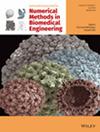Effect of Pulsatile Blood Flow Parameters on Membrane Oxygenator Performance: A Cross-Scale Simulation Study
Abstract
Pulsatile blood flow has the potential to improve microcirculation perfusion and increase the oxygen transfer rate of the oxygenator. However, the specific effects of pulsatile blood flow parameters on the oxygen transfer rate remain unclear. A cross-scale simulation model for the oxygenator is established to investigate the relationship between the oxygen transfer rate of the oxygenator and the pulsatile blood flow parameters. This model comprises a macroscopic model for the oxygenator and a microscopic model for the hollow fiber membrane within the oxygenator. The macroscopic model is employed to calculate the oxygen transfer rate of the oxygenator under various pulsatile blood flow parameters, and a back propagation (BP) neural network is trained to extend the calculation result. The microscopic model for the hollow fiber membrane is employed to elucidate the mechanisms responsible for variations in the oxygen transfer rate. The simulation results demonstrate that at a blood flow rate of 1 L/min, the oxygen transfer rate is minimally affected by blood flow pulsation parameters. While under 2 L/min to 5 L/min, compared to steady blood flow, the oxygen transfer rate can be increased by 3% to 6% when pulsatile blood flow with a pulsation frequency below 0.5 Hz and a pulsation amplitude exceeding 80% is used. However, as the pulsatile frequency increases or the amplitude decreases, the oxygen transfer rate may approach or even fall below the levels achieved under steady-state blood flow conditions.


 求助内容:
求助内容: 应助结果提醒方式:
应助结果提醒方式:


